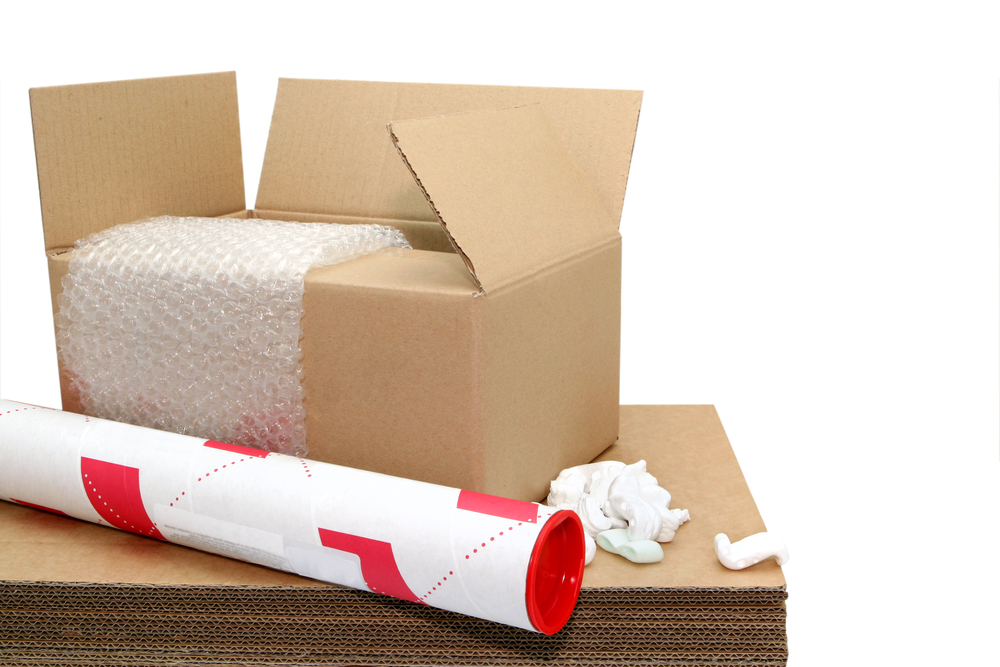

Did you ever entertain yourself (and annoy your parents) by popping bubble wrap when you were a kid? Of course, you did! On top of being ridiculously fun, bubble wrap is one of the seven types of packing material people use to protect their shipments. Packing material doesn’t just protect the contents of your shipment. It also has the potential to create a memorable unboxing experience for your recipient! Those memorable experiences are what great shipping is made of, and these days, great shipping often boils down to great packaging. That begs the question:
Table of Contents
- How Does Packing Material Affect Great Packaging?
- Seven Types of Packing Material
- Great Packing Material Considers Both Protection and Presentation
How Does Packing Material Affect Great Packaging?
In our opinion, great packaging accomplishes three key objectives:
- Protects and secures your items
- Absorbs shock and impact from outside forces
- Makes opening your package a memorable experience
If you’re interested in great packaging, you’ve come to the right place! There are a variety of materials you can use to secure your products, and we’ve got them all outlined below.
Pro Tip: If you’re shipping small packages under 20 pounds with USPS, you should ALWAYS ship with a special USPS service called Priority Mail Cubic. Priority Mail Cubic isn’t something the USPS offers to the public, but it’s BY FAR the cheapest way to send small parcels up to 20 pounds (like a subscription box). Cubic is priced based on the size of your package rather than the weight, so you’ll definitely want to plan your package dimensions.
Seven Types of Packing Material
1. Packing Peanuts
Not to be confused with the peanuts you get on airplanes, packing peanuts are one of the most common types of packing material. There are two kinds: styrofoam and starch. With high shock absorption and low cost, peanuts are an attractive packing solution for most products.
However, using packing peanuts has its downsides. Styrofoam peanuts aren’t biodegradable, while starch peanuts can decompose when exposed to moisture. Both types of packing peanuts are prone to static, notoriously hard to clean up, and don’t necessarily provide recipients with that “superior” feel of great packaging.
2. Bubble Wrap
A less messy alternative to peanuts, bubble wrap is ideal for shipping rectangular items like books and pictures. That being said, bubble wrap can pretty much be used in any type of packing scenario. One perk of bubble wrap is that it usually comes in large rolls, so you can easily wrap and re-wrap delicate items as often as you need in order to protect them. Bubble wrap also has recycled and color options, which come in handy if the design of your package calls for a certain color.
Bubble wrap comes in four different sizes based on diameter: 1/8 inch, 3/16 inch, 5/16 inch, and 1/2 inch. Generally speaking, bigger bubbles are better for cushioning larger or heavier items that might see more impact during transit. To put it simply: the bigger the item, the bigger the bubble.
On the flip side, smaller bubble wrap doesn’t offer as much impact protection, but is much more flexible and provides better per-inch coverage for smaller items.
3. Crinkle Paper
Another alternative to packing peanuts, crinkle paper can add a touch of personality while filling the empty spaces in your packaging. People love the way it looks, and it’s often made from recycled material! Crinkle paper comes in lots of colors, making it one of the most popular packing materials for consumer applications.
As a downside, crinkle paper often clutters and sticks together. It also tends to settle during shipping, which means it can take a LOT of it to protect the contents of your package.
4. Packing Paper
Typically used to fill voids in smaller packages, packing paper is more aesthetic than anything. That being said, packing paper has many different colored options and is great for adding some flair to your package’s presentation.
The biggest downside to packing paper is that it offers little to no shock absorption, which makes it an illogical choice when shipping fragile items that need protection.
5. Air Pillows
Need to fill a lot of space inside your package? Air pillows are an effective and economical solution. They come in a variety of sizes, the most common being 4 inches by 8 inches. Air pillows also have recycled alternatives, which are typically colored green.
Pro Tip: Some air pillows come pre-filled, while others require inflation by a machine or a straw. Be sure to check, or you might find yourself out of breath fast!
6. Foam
If you’re looking for additional insulation for your items, foam sheets and custom-fitted foam inserts are excellent choices. You can place foam sheets across the bottom, sides, and top of your product for extra protection. There are two kinds of foam you’ll typically see: styrofoam and polyethylene. Styrofoam is more rigid, used for covering TVs, computers, or other large items. Polyethylene sheets are thinner and more flexible, great for wrapping delicate items or filling out empty spaces.
The biggest downside to using foam is that it’s generally more expensive than packing peanuts or bubble wrap.
7. Molded Package Inserts
Want to give your package the “wow” factor? Custom mold inserts are the way to go. While easily the most expensive form of packing material, creating a custom-mold insert will give your packaging that premium feel that will keep customers coming back time and time again. Custom mold inserts keep items firmly in place during transit, and are actually required when shipping alcohol and other sensitive goods. Outside of their required use, they are also widely used when shipping electronics, glass, home goods, and other delicate consumer products.
Great Packing Material Considers Both Protection and Presentation
These days, great shipping often comes down to great packaging. When it comes to adding packing material to protect your items, choose the options that make the most sense for you. Don’t be afraid to spend a little more to go the extra mile. If your packing material can make your recipient’s unboxing experience a memorable one, that’s even more icing on the cake. eCommerce business owners, take note: Presentation is everything!
Looking for some tips on great presentation? Check out our guide: How Packaging Inserts Can Help Build Brand Loyalty.


Dian Thomas Ministries International
As a ministry new to offering ministry products, this link was very helpful for my success with mailing a professional package to my buyers! Thank You!
Evg. Dian Thomas